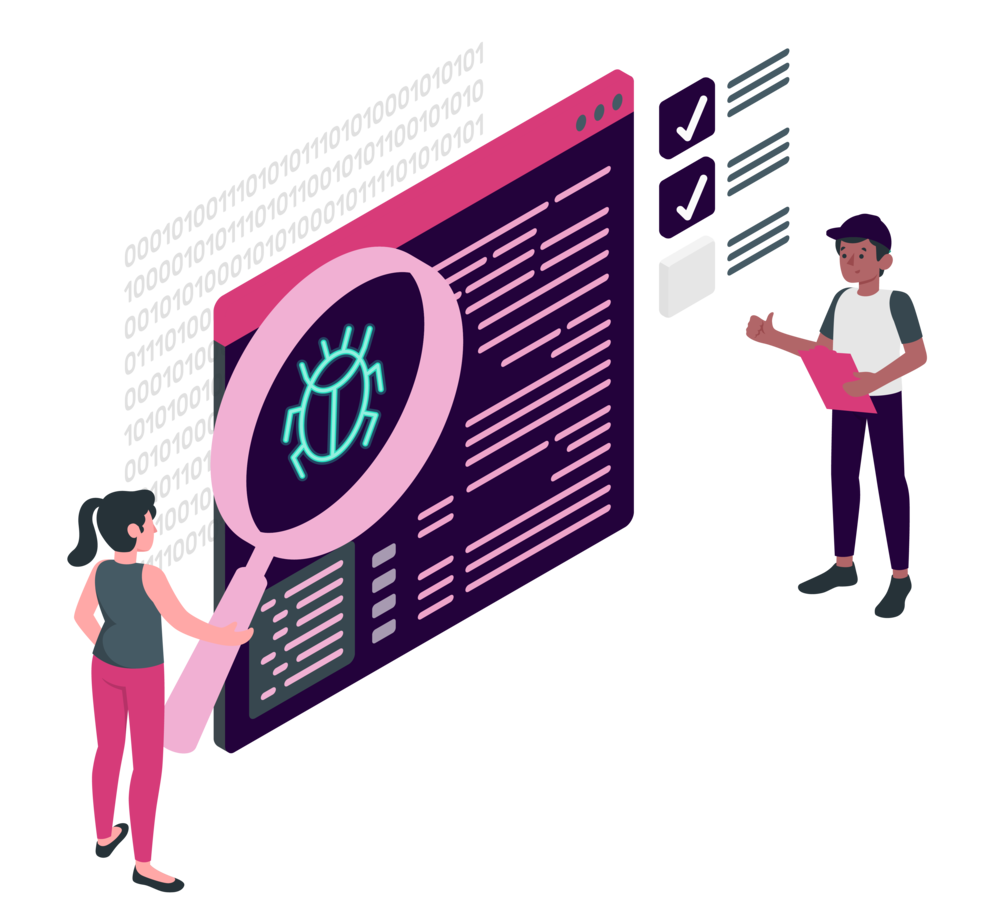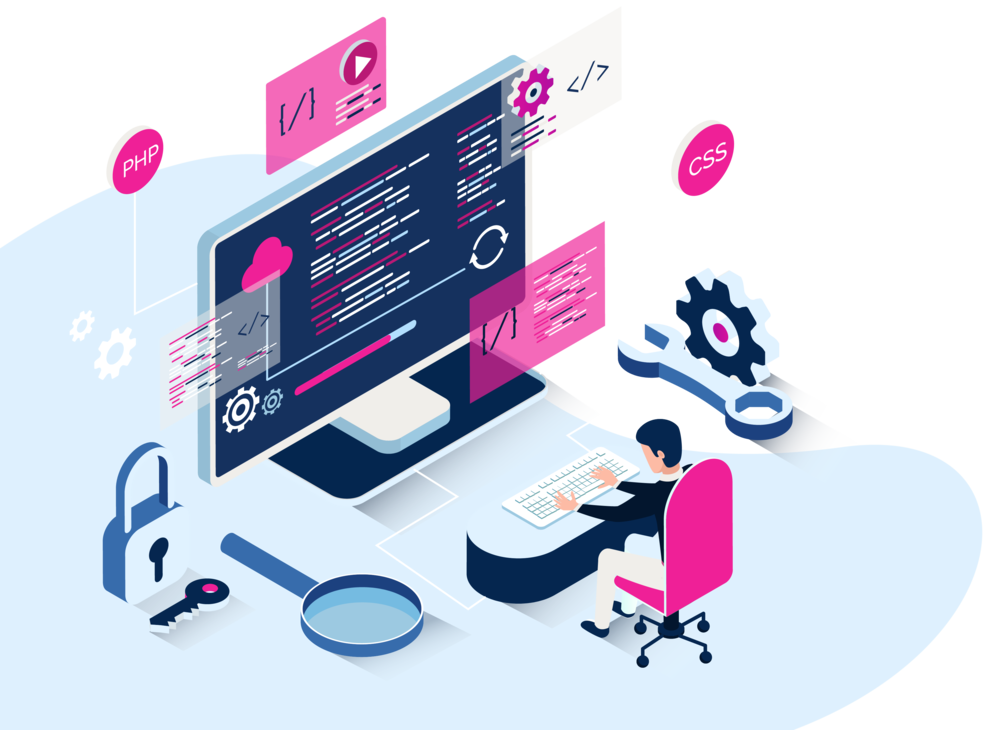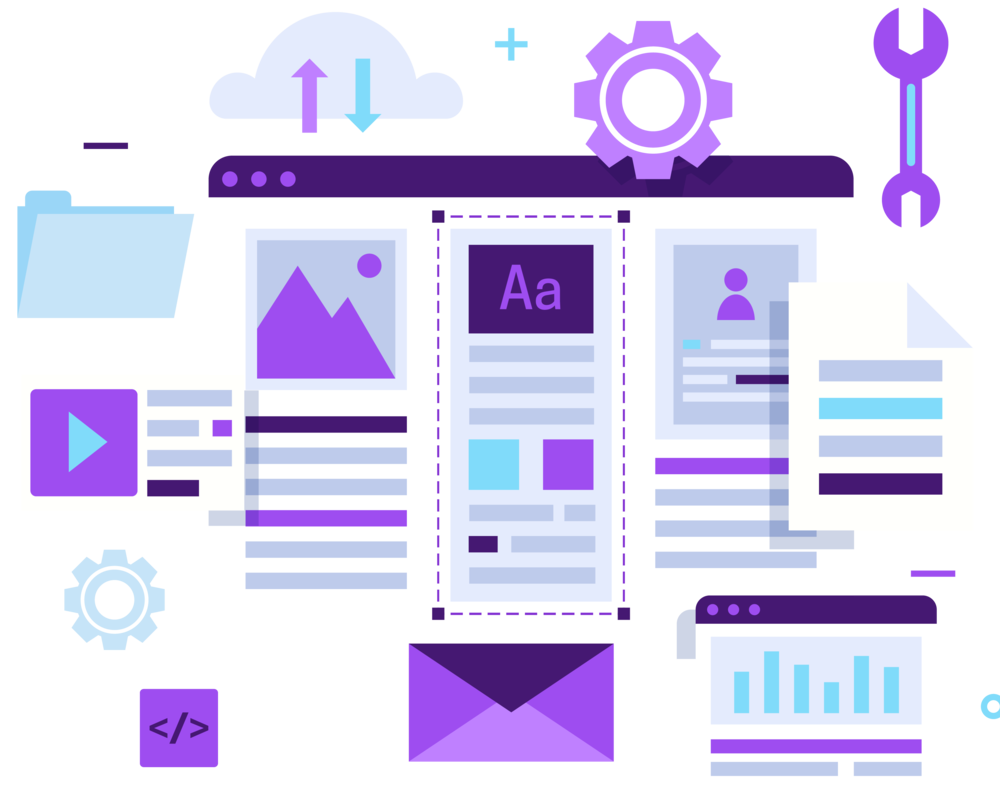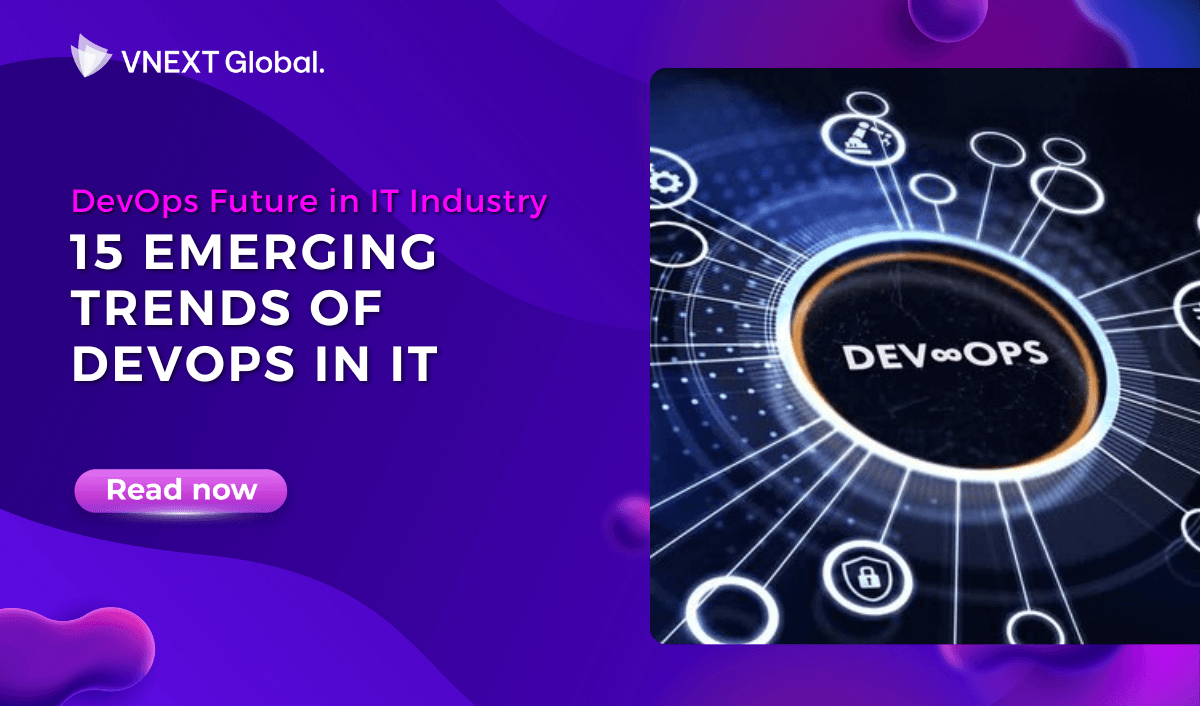DevOps Future in IT Industry: 15 Emerging Trends of DevOps in IT
The world of DevOps is in a constant state of evolution, driven by the need for speed, efficiency, and reliability in software development and IT operations. As organizations strive to remain competitive and meet ever-growing customer demands, they are embracing emerging trends that are reshaping the DevOps landscape. In this comprehensive guide, we will explore 15 emerging trends that are shaping the future of DevOps!
1. DevSecOps: Putting Security at the Heart of DevOps
Security (Sec) is becoming an integral part of DevOps (Dev) to form DevSecOps. This trend emphasizes security as code, with automated security testing, vulnerability scanning, and compliance checks integrated into the DevOps pipeline. DevSecOps ensures that security is not an afterthought but a proactive consideration from the start.
Security breaches can be costly and damaging to an organization's reputation. By integrating security into DevOps processes, vulnerabilities can be identified and mitigated early, reducing security risks.
According to a report by DevOps.com, organizations that embrace DevSecOps experience a 50% lower rate of security vulnerabilities.
Real-world Case: The global financial services firm, JPMorgan Chase, adopted DevSecOps practices to enhance its security posture. By integrating security into the development pipeline, they reduced vulnerabilities and improved overall security.
2. AIOps: Leveraging Artificial Intelligence for IT Operations
AIOps leverages machine learning and artificial intelligence to enhance IT operations. It helps in automating routine tasks, predicting and mitigating issues, and providing insights into system performance and reliability.
AIOps can improve the efficiency and reliability of IT operations by automating repetitive tasks and providing predictive insights that allow organizations to proactively address potential issues.
According to Gartner, by 2023, 40% of DevOps teams will use AIOps to support CI/CD pipelines.
Real-world Case: Netflix utilizes AIOps to optimize its streaming platform's performance. By analyzing vast amounts of data in real-time, they can proactively address issues, ensuring a seamless user experience.
If you are interested in more use of AI, let’s refer to this blog!
10 Applications of Artificial Intelligence in 2023
3. GitOps: Extending Version Control to Infrastructure and Operations
GitOps extends the principles of version control from code to infrastructure and operations. It involves managing infrastructure declaratively through code stored in a Git repository, making it easier to maintain and replicate infrastructure configurations.
GitOps simplifies infrastructure management, enhances version control, and ensures consistency across environments. It aligns infrastructure changes with development, making the entire process more transparent and auditable.
A survey by the Cloud Native Computing Foundation (CNCF) found that 69% of respondents had adopted GitOps practices in their organizations.
Real-world Case: Weaveworks, a container and microservices company, pioneered GitOps practices to manage Kubernetes infrastructure. This approach streamlined their operations and improved infrastructure reliability.

4. Serverless Computing:
Serverless architectures, like AWS Lambda and Azure Functions, are gaining popularity. DevOps teams are leveraging serverless for event-driven and microservices-based applications, reducing operational overhead and improving scalability.
Serverless computing allows organizations to focus on code and business logic while offloading infrastructure management to cloud providers. It enables rapid scaling and cost optimization.
According to Gartner, by 2025, 50% of global enterprises will have deployed serverless computing.
Real-world Case: Capital One adopted serverless computing for certain banking applications, achieving significant cost savings and improved scalability.
5. Kubernetes and Containers: Container Orchestration
Kubernetes has become the de facto container orchestration platform. DevOps teams are increasingly adopting Kubernetes for container management, deployment, scaling, and resource optimization.
Containers and Kubernetes enable organizations to build, deploy, and manage applications consistently across different environments. They offer scalability, portability, and resource efficiency.
A survey by the Cloud Native Computing Foundation (CNCF) found that 83% of respondents use Kubernetes in production.
Real-world Case: Spotify adopted Kubernetes to manage its microservices-based infrastructure, leading to improved resource utilization and scalability.
6. Infrastructure as Code (IaC): Automating Infrastructure Management
IaC continues to evolve, with tools like Terraform and Ansible gaining prominence. It allows infrastructure provisioning and management through code, leading to greater reproducibility and automation.
IaC automates infrastructure deployment and configuration, reducing manual errors and enhancing consistency. It accelerates the provisioning of resources.
A study by HashiCorp found that organizations using Terraform reduced the time spent on infrastructure provisioning by 50%.
Real-world Case: Airbnb uses Terraform to manage its global infrastructure, improving resource provisioning and reducing manual effort.

7. Continuous Integration/Continuous Delivery (CI/CD) for Everything
Beyond application code, CI/CD pipelines are being applied to infrastructure, machine learning models, and databases. This trend accelerates the delivery of changes and improvements across the technology stack.
Extending CI/CD practices to all aspects of technology delivery ensures that changes are delivered reliably and efficiently across the entire stack, reducing deployment risks.
According to a survey by GitLab, 87% of respondents use CI/CD pipelines for automating application deployments.
Real-world Case: Google employs CI/CD pipelines not only for application code but also for machine learning model deployment, enabling rapid updates to its AI-powered products.
8. Multi-Cloud and Hybrid Cloud Strategies
Organizations are adopting multi-cloud and hybrid cloud strategies for increased flexibility and resilience. DevOps practices are adapting to manage and orchestrate applications and data across different cloud environments.
Multi-cloud and hybrid cloud approaches mitigate vendor lock-in, enhance disaster recovery, and offer flexibility in choosing the most suitable cloud services for specific workloads.
A report by Flexera found that 92% of organizations have a multi-cloud strategy.
Real-world Case: GE Healthcare embraces a multi-cloud strategy to ensure business continuity and optimize cloud resources based on application requirements.
9. Immutable Infrastructure: Reducing Configuration Drift
Immutable infrastructure involves creating and deploying infrastructure components as unchangeable artifacts. This trend enhances reliability, security, and predictability by eliminating configuration drift.
Immutable infrastructure reduces operational risk by ensuring that infrastructure components remain consistent and predictable throughout their lifecycle.
According to Puppet's State of DevOps Report, high-performing organizations practice immutable infrastructure twice as often as low performers.
Real-world Case: Netflix leverages immutable infrastructure principles to ensure that its streaming platform remains reliable and consistent.

10. Observability: Gaining Insights into Complex Systems
Observability tools, including distributed tracing, logging, and metrics, are becoming essential for monitoring and troubleshooting complex, distributed systems. DevOps teams rely on observability to gain insights into application performance and user experience.
Observability allows organizations to proactively detect and resolve issues, leading to improved system reliability and enhanced user satisfaction.
A survey by Lightstep found that 92% of respondents believe that observability improves system reliability.
Real-world Case: Twitter uses observability tools to gain insights into its microservices-based architecture, ensuring real-time monitoring and issue resolution.
11. NoOps: Embracing Fully Automated Operations
While not entirely replacing DevOps, some organizations are exploring NoOps concepts, where infrastructure and operations are so automated that they require minimal human intervention. This trend is enabled by cloud-native services and serverless computing.
NoOps can reduce operational overhead, accelerate deployments, and simplify resource management for cloud-native applications.
Real-world Case: AWS Lambda provides a serverless platform where organizations can run code without worrying about server management, moving closer to a NoOps paradigm.
12. Site Reliability Engineering (SRE): Ensuring Service Reliability
SRE practices, popularized by Google, are being adopted by more organizations to ensure the reliability of services and systems. SRE combines aspects of software engineering with operations, focusing on service availability, latency, performance, and efficiency.
SRE practices help organizations maintain high service availability, meet SLAs, and improve the overall user experience.
A survey by O'Reilly found that 64% of organizations had implemented or were actively considering implementing SRE practices.
Real-world Case: Google, the pioneer of SRE practices, maintains high availability and reliability for its services, such as Google Search and Gmail.

13. Edge Computing: Extending DevOps to the Edge
With the rise of IoT and the need for low-latency processing, DevOps practices are extending to edge computing environments. Edge DevOps involves managing and deploying code and services to edge devices and locations.
Edge DevOps enables organizations to deliver low-latency services and applications, supporting use cases such as autonomous vehicles, smart cities, and industrial automation.
The edge computing market is expected to grow to $250.6 billion by 2024, according to MarketsandMarkets.
Real-world Case: Walmart uses edge computing for inventory management, ensuring real-time updates and efficient operations in its stores.
14. Shift-Left Testing: Early and Frequent Testing
Testing is being moved earlier in the development process, often to the development phase itself. Techniques like unit testing, integration testing, and security testing are performed as code is being written, reducing defects and accelerating delivery.
Shift-left testing helps catch defects and vulnerabilities early, reducing the cost and effort required for defect remediation in later stages of development.
A report by Capgemini found that organizations practicing shift-left testing experience a 10% reduction in testing costs.
Real-world Case: Facebook employs a robust shift-left testing strategy to maintain the quality of its constantly evolving social media platform.
15. Green DevOps: Minimizing Environmental Impact
Sustainability and environmental considerations are becoming part of DevOps practices. Green DevOps aims to minimize the carbon footprint of software development by optimizing resource usage and reducing waste.
Green DevOps aligns with corporate social responsibility goals, reduces operational costs, and promotes environmentally friendly practices.
According to a report by the World Economic Forum, implementing sustainable practices in IT, can lead to a 20% reduction in greenhouse gas emissions by 2030.
Real-world Case: Microsoft commits to becoming carbon negative by 2030 and is incorporating green practices into its data centers and operations.

Final Thoughts:
The future of DevOps in the IT industry is a dynamic and exciting landscape characterized by continuous innovation and adaptation. Organizations that embrace these 15 emerging trends are better positioned to meet the challenges of a rapidly evolving digital world. From enhancing security with DevSecOps to leveraging artificial intelligence for IT operations and optimizing resource usage with Green DevOps, these trends are driving efficiency, reliability, and sustainability in software development and IT operations. By staying at the forefront of these trends, organizations can deliver higher-quality products and services, respond to changing customer demands, and remain competitive in an increasingly technology-driven world.
If you are looking for a trusted IT partner, VNEXT Global is the ideal choice. With 14+ years of experience, we surely can help you to optimize your business digitalization within a small budget and short time. Currently, we have 400+ IT consultants and developers in Mobile App, Web App, System Development, Blockchain Development and Testing Services. We have provided solutions to 600+ projects in several industries for clients worldwide. We are willing to become a companion on your way to success. Please tell us when is convenient for you to have an online meeting to discuss this further. Have a nice day!












